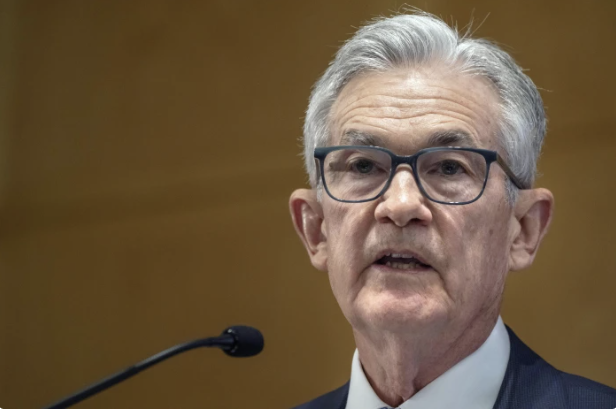font size

The yield on the 10-year Treasury note reached a 15-year high this week.
El Drago/Bloomberg
The Fed’s most aggressive campaign to raise interest rates since contracts crushed the bond market in 2022, sending the iShares Core US Aggregate Bond ETF down 13%.
After rebounding earlier in the year, bonds have taken further losses in recent days as yields have risen sharply. Bond prices go down when yields go up.
Investors buy bonds for a safe income, not for double-digit losses. But there is a silver lining to clearing the bond market. Yields have risen to levels not seen in years, giving patient investors the opportunity to enhance their investment portfolios with bonds with the potential for high income and capital gains.
For retirees and those nearing retirement, the question is where should they invest in the vast world of fixed income? What is the appropriate period? Short-term Treasury bonds – including 3- and 6-month Treasury bills – yield returns above 5.4%. That’s tempting. But if the Fed starts cutting rates in 2024, longer-dated bonds would be the better investment.
Here are three things to keep in mind as you build your bond portfolio.
1. Start by extending the duration
If you are or near retirement and your goal is to generate income and reduce portfolio risk, “we would suggest investors get out of retirement and buy medium-term bonds, in the five- to 10-year region,” he says. Cathy Jones, chief fixed-income strategist at the Schwab Center for Financial Research.
Jones suggests taking a peaceful approach so that investors can spread out different bond maturities over time. (A bond ladder is a portfolio of individual bonds with different maturities, designed to provide income while reducing exposure to fluctuations in interest rates.)
Aim for the average term of a graded bond portfolio to be about six years, Jones says. These rates can generate 5%-5.5% depending on how much credit risk you are willing to take. “It was the highest return you could get in almost a decade, and the highest real interest rates we’ve seen in a very long time,” she says.
Similarly, Jeffrey Elswick, director of fixed income at Frost Investment Advisors, recommends graded bonds with maturities between two and 10 years, with an average maturity of about five years. “You get a higher yield than we’ve had for most of the last decade,” he says.
Elswick says it makes sense to risk a little longer, but not by much. “We recommend not getting too exposed on the long end,” he says, since it has the lowest returns and the highest risks. “You will give up more income in the near term by investing in stocks for 30 years instead of 5 and 7.” Shorter terms carry less price risk, but longer term bonds provide greater yield and certainty of total return – a crucial factor when you have to consider financing the next 20 to 30 years of retirement.
2. Short-term bonds look great right now, but don’t forget the reinvestment risks
Treasury bonds and short-term money markets yield returns of up to 5%. Shouldn’t retirees keep a large portion of their fixed income portfolio in this fixed income corner and take comfort in the safety and great return?
actually no. Consider reinvestment risk, or the risk of having to reinvest maturing bonds at a lower interest rate in the future. Essentially, currently high levels of yield are transient and likely will not be high when your bond matures and you want to reinvest your money.
“If you think you’re going to roll over the next five years’ T-bills at 5%, you might be disappointed,” says Jones. “What would you do if yields fell? Because that’s what the inverted yield curve tells us, which is that the Fed expects yields to fall.
While interest rates may not fall in the next six months as the Fed keeps interest rates high to beat inflation, by staying short you will miss out on the opportunity to raise capital for long-term securities if interest rates fall. And just as bond prices fell last year amid rising interest rates, they could rise next year amid lower interest rates.
Consider the potential for yields on treasury bills and monetary instruments to peak. “If we’re right, and the Fed raises interest rates one last time, then all these types of securities and money market funds have reached their limit,” says Elswick. “They don’t go up a lot in terms of the return they’re offering.”
3. Inflation protection just got cheaper
Treasury inflation-protected securities, or TIPS — a type of Treasury security whose principal is indexed to inflation and used to protect investors against inflation — is another fixed-income portfolio option.
Retirees should generally enjoy some form of inflation protection, and TIPS is one of the best ways to do that, says Amy Arnott, portfolio strategist at Morningstar, who adds that TIPS returns are still attractive, especially if they remain with five-year maturities. years or less.
The market expects an expected inflation rate of 2.3% now. “If you buy TIPS at that level, where the current real yield is about 2.12% on 5-year TIPS, you have a kind of built-in hedge in case “Inflation appears to be higher than the market expects,” says Arnott. “I think that’s a real possibility – although we’ve seen good inflation numbers recently.”
Corrections and amplifications: Jeffrey Elswick is the Director of Fixed Income at Frost Investment Advisors. In a previous version of this article, it was incorrectly identified as working for Frost Financial Advisors.
Write to [email protected]
(tags for translation) Trust Funds/Funds/Financial Vehicles



